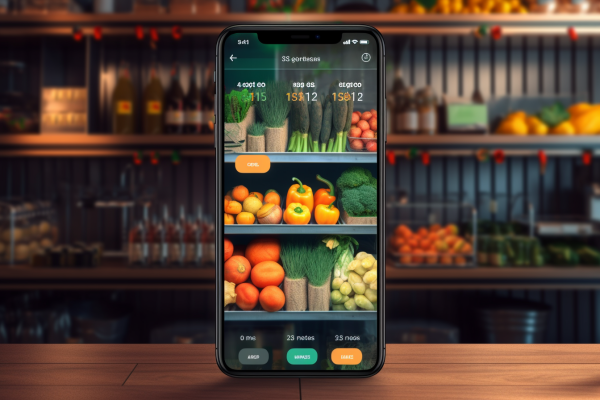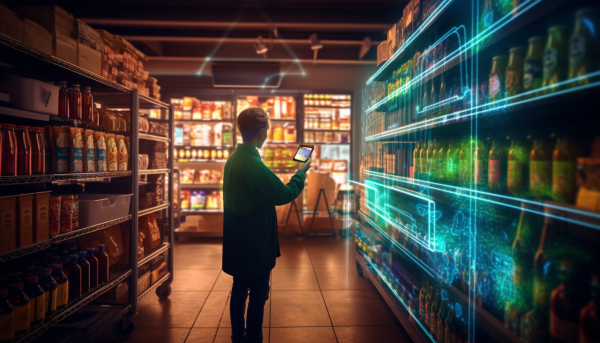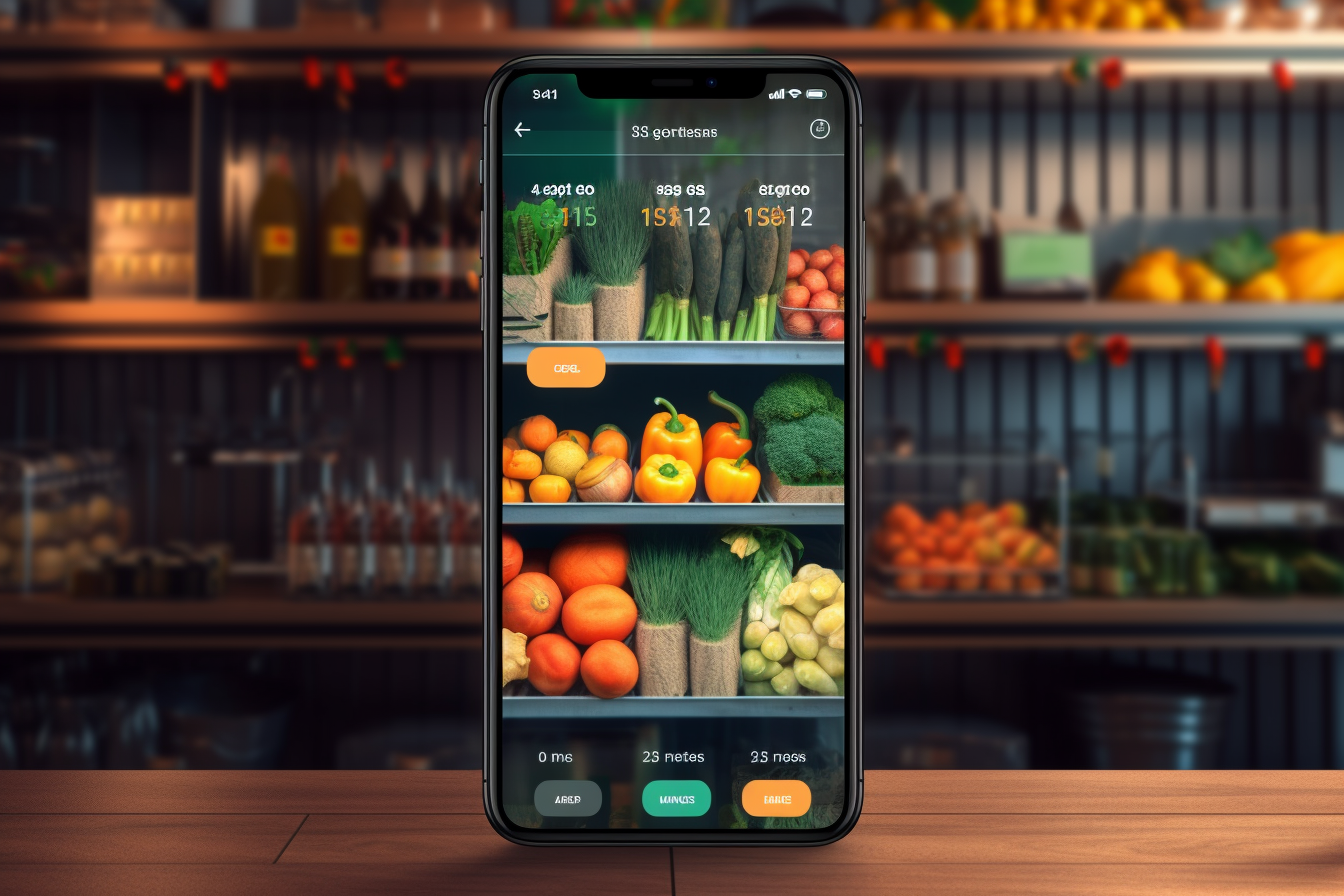
Every good retailer understands the 4 Ps of marketing: Consumers are looking for the right product at the right place for the right price in the right promotion (the time they want to buy). When those 4 factors match up, sales happen and profits get made. The limitations of human capability to accurately predict the 4Ps is often the difference between success and failure, which is why so many big grocery chains are turning to AI. Collecting customer data is no longer the problem in retail, but wielding it to great effect is. AI alone has the power to collect, analyze, and deliver recommendations that connect customers with what they want repeatedly and successfully.
The retail grocery industry is an ideal candidate to leverage AI consistently. People are creatures of habit at the grocery store; it’s seen as a job or a chore that they must do every week. They aren’t enjoying themselves as they would if they were shopping for clothes or entertainment or something they consider a hobby.
While grocery store merchandisers and buyers put together dazzling displays for holidays and special occasions in store, the online grocery store experience is driven by recommendation engines that gobble up billions of bits of data.
Studies show that at least 50% the typical grocery basket is filled with items that people are buying every week without deviation: your standard milk, cereal, bread, and orange juice purchases are staples on the family grocery list for a week of relatively healthy eating. With so many items going straight from the grocery list to the online shopping cart, there’s not a lot of room for deviation and the hope of upselling for merchants.
Grocery stores typically make a profit margin between 1-3%, meaning that if they don’t know what their customers want really well, they’re going to find themselves on a razor-thin edge between solvency and the bad side of the equation. Groceries are a rare breed in the retail business as it is; perishable, price-sensitive, and fickle. Some customers come to the store 5 times a week, others once a month. Some items are in heavy demand for 7 days in a row and no one even thinks of buying them the rest of the entire rest of the year.
All of these factors and the precision of it all makes the online grocery business a perfect candidate for the use of AI to optimize those qualities of the right product, the right place, the right price, and the right time.
How AI Can Solve Big Grocery’s Biggest Challenges
Online shopping for groceries was somewhat of an albatross until the COVID-19 pandemic of 2020. Before people were forced to stay home, the weekly trip to the grocery store bordered on an American tradition. Necessity revealed a different alternative, one that eliminated the hassle of the crowds and the loading of everything into the car. In 2020, online grocery sales increased by 103% to $73.7 billion, and plenty of consumers have never looked back. But having so many shoppers move from the brick-and-mortar store to the virtual one has put extra pressure on grocery stores to be at the top of their game around the clock, including in these three key areas:
The Search Bar
Nearly 42% of online shoppers start their user experience with the search bar, and because of the power of the Googles and Amazons of the world, shoppers expect the terms they punch in to deliver the perfect, precise results every time. If a store’s algorithm struggles to produce exceptional results, customers will get frustrated quickly. That’s tough enough without factoring in things like misspelled words, local language differences, and relevancy. If a Spanish-speaking consumer in south Texas types in “pan de molde” in search of its English equivalent (sandwich bread), will the algorithm be able to pick up on the language shift or will it bring back that there are no “mold pans” for sale? More sophisticated AI models are able to pick up on synonyms, common misspellings, and regional terms more quickly and accurately, and learn from each shopper’s intent
The more each customer interacts with the search bar, the better the algorithm can respond to find specific items for their general terms. If a consumer has bought Cheerios for 17 of the last 20 weeks, when they type ‘cereal’ into the search bar, the AI will display results with Cheerios at the top, followed by any other brands they have purchased recently, followed by cereals that other people who also bought Cheerios by the most often. This sort of unconscious connectivity between the AI and the consumer builds an understated trust that the store is in sync with their needs and builds rapport.

Product Recommendation
If you ever want to experience how different one locale is to the next when it comes to food and drink, just try the coffee or the barbecue. You’ll wonder if you’re on the same planet! Grocery store chains can’t dump the same online inventory onto the site for each store. They need to mold it to the regional specifications - the weather, the calendar, and the culture come to mind. Putting ice cream on sale when in Wisconsin just before a blue norther hits is about as savvy as selling five-alarm chili in southern Arizona when tomorrow’s high is 113 degrees. The more data points that AI has about the environment that is producing the store’s customers, the more likely it is to problem solve which products make the most sense for external conditions. Knowledge is power in the online grocery experience, and those sorts of extra points of data are what drive personalized merchandising that let AI present the right product at the right time.
Not to be overlooked is the power of AI to recommend substitutions for products that might be limited or out of stock, or when a store is trying to move merchandise for one reason or another. If those same delicious Cheerios from earlier are on backorder because of a supply-chain mishap, the algorithm can instead recommend the grocery store-produced generic version of them, keeping the customer happy with a similar product, increasing the grocer’s brand recognition, and moving merchandise that doesn’t involve sending a cut back to General Mills.
Smart pricing
Overlap from one grocery store chain to the next is immense. Everyone sells milk, eggs, and meat, even if they are all sourcing it from different vendors. Going toe to toe against the other heavyweights is a slugfest where the margin of difference is a few cents either way. But consumers are savvy about their money, and if they see an obvious pattern emerging in prices on milk or meat or anything that they’re purchasing routinely, 90% say they will absolutely switch allegiances in a heartbeat to save money.
The heavy hitters like Walmart and Kroger are already using AI to scrape the prices of their competitors and devour data such as supplier costs, price history, and inventory levels to affect their own real-time pricing in order to find the smallest niches to keep customers happy and purchasing these staples from them instead of wandering over to a competitor’s app. By tying in AI and automated price strategies, grocers can swiftly adjust prices based on macro factors like supply, demand, and the cost of sourcing, capitalize on problems at rival chains, and respond to real-time customer buying trends. Each time a price is moved, the data feeds continuously back into the system to measure its effectiveness. Price isn’t the ultimate end all, be all of strategies, of course. Costco sells its rotisserie chicken below cost because it keeps bringing customers back, and they always wind up staying to buy more. Every chain has its hooks that are designed to set it apart and keep customers coming back, but for items where the difference of a few cents makes a big difference in volume, AI is a powerful tool. Its near real-time ability to analyze data lets it provide insight of what exactly the threshold is for each customer in terms of how much they’ll pay for a gallon of milk or a cut of meat before pushing back and grabbing those items from another retailer. Being able to quantify brand loyalty and set prices accordingly is a huge boon.
Promos
The A/B test is the oldest trick in the book for marketing. Discounts, specials, and coupons are a large part of the grocery store strategy - in-person or online - to move new and specialty items. AI can be used to rapidly increase the rate of analysis on which version of ad visuals, ad copy, and various mix-and-match deals are working the most effectively and which need to go back to the drawing board. This takes the guesswork out of signage, combination coupons, special offers, even which free samples are being promoted during the weekend rush. Every time customers react positively to a certain phrase, a certain image, or a certain sentiment, that data is fed back into the engine to further narrow down the best fit to move items. This sort of analysis might reveal that customers don’t like the term “clearance” because they think they’re getting items that are about to expire, but they do like the term “special” because it makes them think they are getting an exclusive deal.
Conclusion
Research states that digital grocery shopping will be a $423 billion industry by 2025. Since 2021, digital grocery shoppers have totalled more than half of the population of the country. AI is well on its way to changing the fundamentals of the retail grocery business The AI being used today in the industry could be thought of as a ‘starter set’ of tools that will only continue to be refined as technological breakthroughs race forward. A future is fast approaching where speech-to-text, or even the possibility of thought-to-text will simplify the grocery process to thinking about what we want and seeing it arrive at the front door within the hour. Our repetitive chores that used to be accompanied by an eyeroll will now be automated and AI will transform into a “super recommendation engine” that learns to know us better than we know ourselves.
Media Contact
Company Name: 8870 Link
Contact Person: Mai Huong Tran
Email: Send Email
Phone: 347-430-7755
Country: United States
Website: http://www.8870link.com


